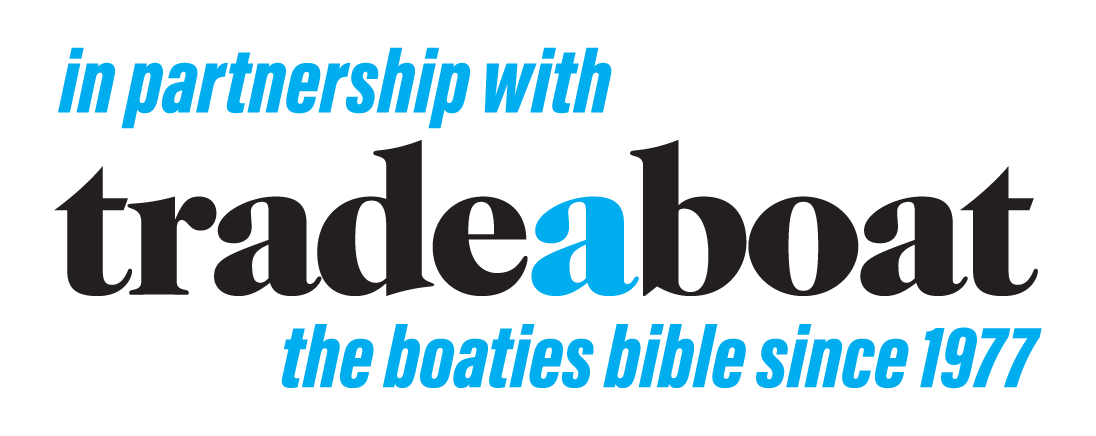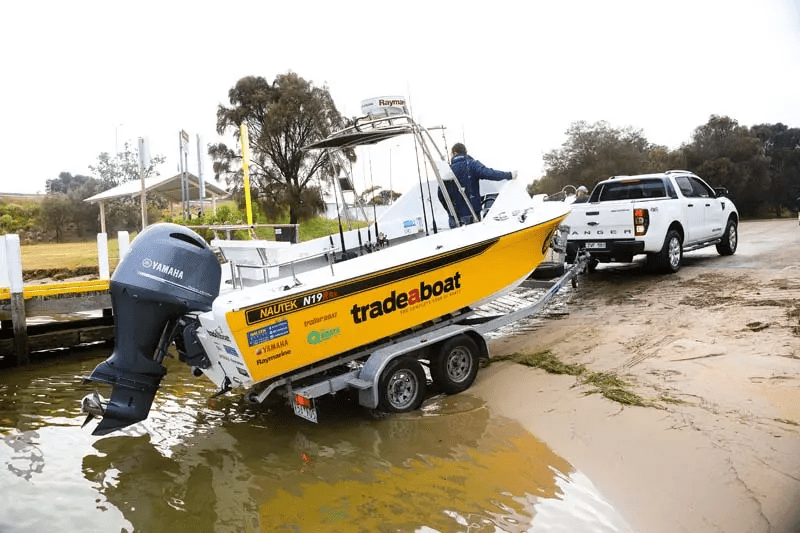
Yamaha 200hp Outboard Gear Review
The Trade-a-Boat crew was justifiably excited at the prospect of fitting a new outboard to our Haines V19R project boat since rechristened the Nautek N19R.
A Yamaha 200 seemed like a lot of power for the old Haines V19R hull, but with a completely renewed, fully rebuilt, and heightened 25-inch transom replacing the original 20-inch and the reduced weight of the newly developed lightweight engine, it was a superb match.
We must remember that the original Haines V19Rs were designed as a fish/ski runabout, and hence, many were originally fitted with big, heavy V6 two-stroke outboards. The deep-vee hull and relatively narrow beam, combined with 20in transom, made a somewhat questionable fishing boat in big seas with a heavy load of fishermen and all their equipment at the transom. The original fuel tank was also centred toward the stern, adding to some balance issues.
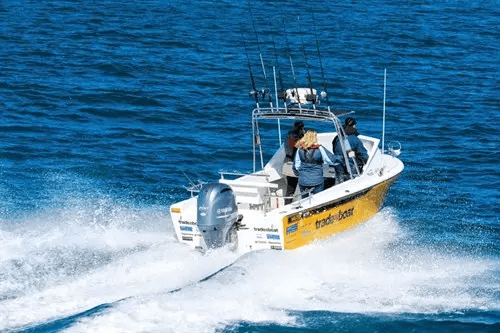
The complete revamp of our boat included raising the transom height, eliminating cable slop stoppers with hydraulic steering and bi-wall fittings, electronic controls to eliminate cable plumbing and a longer fuel tank providing greater weight distribution, which balanced things up nicely.
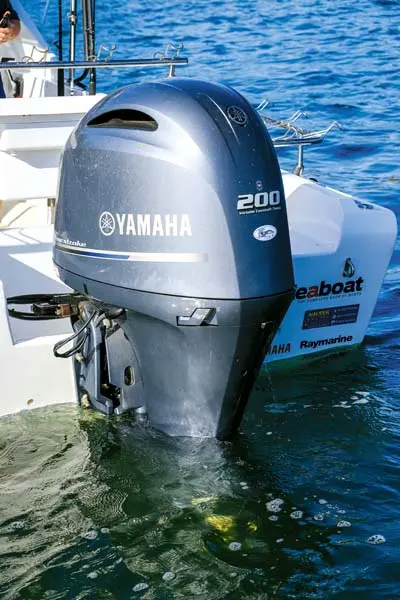
Yamaha 200
The new Yamaha 200hp outboard motor weighs in at only 222kg (225kg with a polished stainless propeller), making it the lightest comparative four-stroke engine on the world market. Indeed, see the difference when compared to competing engines.
- Suzuki DF200 outboard weight: 263kg
- Honda BF200 outboard weight: 272kg
- 200hp Mercury Verado outboard weight: 231kg
Like many Yamaha outboards, the Yamaha 200hp has a very compact, slimline design. This is reflected by the upright inline four-cylinder 2.8lt, double overhead camshaft configuration. This compact yet lightweight efficiency makes it the most attractive engine, not only for fishing and general use but also for the ski and performance boat sectors, which have been looking for better power-to-weight ratios combined with the high fuel efficiency of the four-stroke engines.
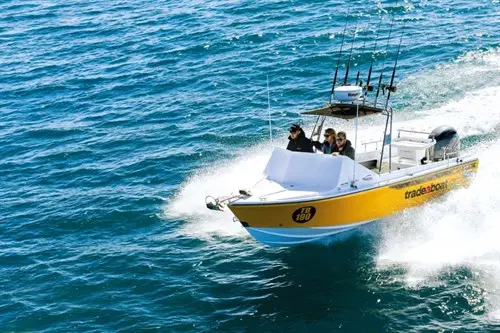
The slimline design also fits well into the relatively small engine well of the Haines V19R and presents a very good alternative to wider V6s in twin-rig configurations with dramatically reduced weight.
We love Yamaha's power and performance, especially its Variable Camshaft Timing (VCT) and weight-saving technology. The new Yamaha engine produces 200hp at 5500rpm and is fuel-efficient.
When redesigning the boat's configuration, we were originally a little concerned about fuel capacity. The low floor in the Haines V19R might aid stability and allow an increased coaming height for safe, stable boating; however, it also meant that we only had room under the floor for approximately 150 of fuel, which isn’t a lot for an offshore-capable fishing boat.
But our fears were dismissed in actual trials. We have been to the continental shelf and back on regular occasions and have never had any fears about fuel consumption.
Raymarine’s dynamic fuel range-ring display screen also shows the boat’s available range on the chartplotter by calculating fuel capacity and fuel usage throughout the rev range. So we never looked like running out of fuel.
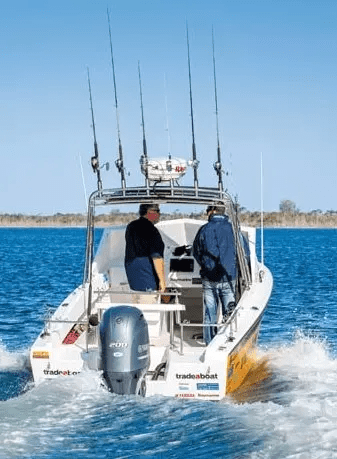
Engine Performance
Our Haines V19 project boat regularly travels through very choppy water in our local Port Phillip Bay at a comfortable speed of around 16kts. It’s easy on the knees and great for sounding and covering large areas efficiently. At that speed, this fishing boat does around 3000rpm and only uses 16.65lt/h of fuel.
Step the speed up a bit to a fast offshore cruise of just under 34kts at around 4500rpm. We are covering a lot of ground really quickly but are still only using around 37lt/h. That’ll get us to the shelf and back at Bermagui or Portland with plenty to spare.
And when hooning in ideal conditions this V19R package topped out out at the magic 50mph (43.4kts) at 5800rpm and using around 75lt/h.
While the Yamaha F200G supplies a huge amount of power, we never use it at top-end speed in everyday fishing ventures. But it’s nice to know that this outboard motor has the grunt when it’s needed.
Although we haven’t had the opportunity to use it, the Yamaha F200G also offers Variable Trolling, which allows you to fine-tune your trolling speeds at 50 rpm.
Another feature on the Yamaha F200G is the Shift Dampener System (SDS) as currently available on Yamaha 4.2lt V6 engines. This is a splined rubber hub inside the propeller drive that reduces the impact force of gear changes and assists in an incredibly smooth, vibration-free drive.
When combined with a silky smooth Yamaha 1.86:1 gearbox, newly developed counterbalance shafts and the instant, friction-free control of the electronic shift, the package slides effortlessly in and out of gear and remains incredibly slick right throughout the rev range for really pleasing operator control. The F200G engine has a Yamaha Reliance 18 three-bladed stainless steel propeller.
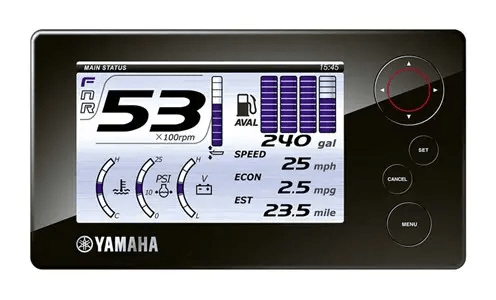
Digital Gauges
The Yamaha F200G engine not only came complete with Digital Electronic control (DEC) and electronic shift, but it also has the 6Y9 High Definition Display, which delivers clear and concise engine operation, service, and maintenance data to a very clear and easy-to-read screen. This is even good for our eyesight, which is getting worse with age.
The brightness and colour of the display can be set to change automatically for maximum visibility, day or night. The display monitors all of the boat’s systems analysis and also allows the performance criteria of multiple outboard fit-ups on a single screen. The system is Y-COP (Yamaha Customer Outboard Protection) compatible and, in the case of the Haines V19R, is fully rigged through NMEA 2000 to our Raymarine multifunction displays.
The V19R needs a large power source to keep the vast array of electronics on—including four multifunction screens, lighting, and an anchor winch.
The Yamaha F200G has a newly designed 50amp alternator offering a 13 per cent increase in charging power during idle. The increase at low revs is vital for the large anchor winch.
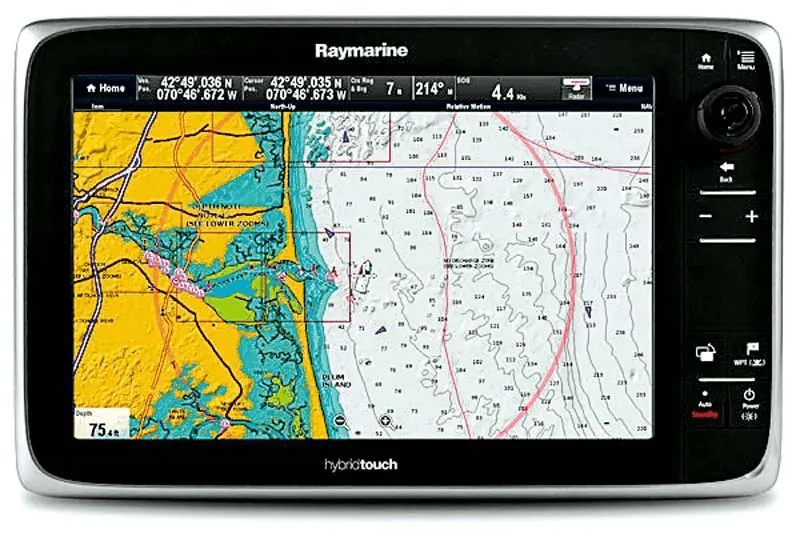
The engine also has a 10mm offset crankshaft for increased torque, large-volume air intakes for greater airflow and efficiency, and a long-track induction system creating ultimate mixture flows.
The four big 96mm bore x 96.2mm stroke cylinders add up to 2785cc in capacity and provide real state-of-the-art power and reliability, while a 4.5lt wet sump provides plenty of essential lubrication.
Yamaha also states the recommended fuel is standard unleaded (89 octane minimum). This alone can lead to big savings at the pump over premium fuel. While the engine will accept ethanol mixes up to 10 per cent, in our minds, there are still problems with ethanol in marine engines and ethanol storage, such as separation and corrosion in tanks, fuel lines, and fittings. For that reason, we simply won’t use ethanol fuel in outboards.
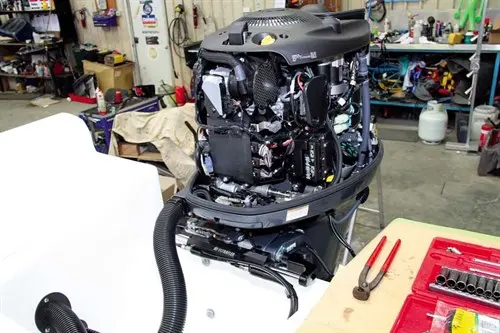
Maintenance
At the time of publication, the Yamaha F200G on our Haines V19R was just over 12 months old. However, our experience tells us that Yamaha outboards are leaders in corrosion resistance.
Yamaha’s YDC-30 aluminium alloy, Phase Five paint system, and electro-deposited powerhead paint process combine with suitable sacrificial anodes to prolong the engine's life, performance, and resale value. It’s also the little things, like a super-tight cowling seal that stops salt air from gathering inside the engine and causing corrosion, that make a real difference in the long term.
We could have installed our breathers a little better initially, as the service diagnosis found a bit of water in the fuel. This was caused by having the breathers positioned on the outside of the hull instead of in the cleaner air around the engine well. Thankfully, a good water-separating fuel filter and a further on-engine fuel filter supplied as standard with the motor saved any concerns.
The proof is in our confidence in the Yamaha200. The outboard is backed up by a four-year warranty, but we don’t think we will ever need it. Such is the supreme confidence we share in our Haines V19R with its amazing new Yamaha F200G outboard motor.
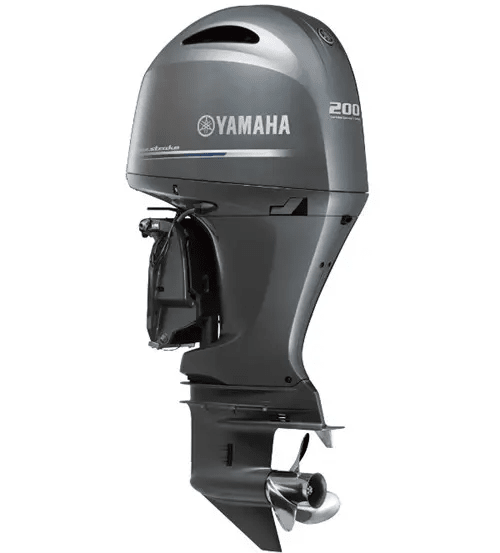
Yamaha F200G Outboard Sea Trials
|
RPM |
SPEED (KTS) |
FUEL BURN (LT/H) |
ECONOMY (NM/LT) |
|---|---|---|---|
|
700 |
2.59 |
1.55 |
1.67 |
|
1000 |
3.99 |
2.95 |
1.35 |
|
1500 |
5.66 |
5 |
1.13 |
|
2000 |
7.03 |
8.8 |
0.8 |
|
2500 |
11.05 |
13.4 |
0.82 |
|
3000 |
17.27 |
16.65 |
1.04 |
|
3500 |
21.8 |
22.1 |
0.99 |
|
4000 |
26.73 |
28.7 |
0.93 |
|
4500 |
30.62 |
37.2 |
0.82 |
|
5000 |
34.77 |
54.8 |
0.63 |
|
5500 |
39.48 |
70.7 |
0.56 |
|
5800 |
40.58 |
75.1 |
0.57 |
Ready to Set Sail?
Find your dream boat online at Only Boats! We have great deals on boats for sale including used boats and new boats. You can also check out our used boat buying guide.
If you're upgrading or planning to sell your boat, why not explore our expert guide on improving boat resale value? If you're planning to attend a boat show soon, we've also put together a detailed boat show buying guide that's perfect for first-time buyers.
Smooth sailing starts with the right boat. We’re here to help you find it!
This article was written by John 'Bear' Willis, and photos provided by the TrailerBoat Editorial Team and previously appeared at TradeaBoat.com.au, now powered by Only Boats.
Found your perfect purchase? Let’s make financing just as easy!
Work with Australia’s best-reviewed finance broker for a great deal and a stress-free experience. With 3,000+ glowing Google reviews, you can trust you're in good hands! See what our happy customers say in Credit One reviews, or jump right in and crunch the numbers with our handy loan repayment calculator. Your ideal financing solution is just a few clicks away!
